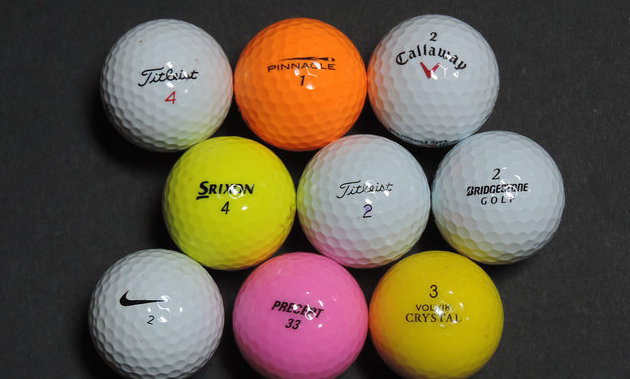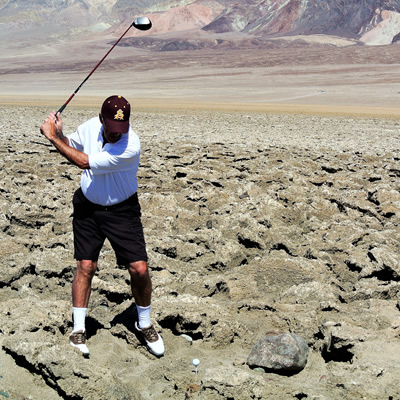The ins and outs of a golf ball
How is a golf ball made and how does it work?

Golf is a huge business, accounting for $25 billion yearly across the United States with golf balls alone making up approximately $450 million. In one year, Titleist makes enough golf balls to go around the world (at the equator) two and a half times. In total, approximately 850 million golf balls are manufactured each year in the United States, with every golfer losing, on average, two balls per round. Although there is both a good supply and demand for golf balls, not all golf balls are created equal, nor do golfers understand the composition of the ball.
The inside of the ball
It would take an engineer and a chemist to really explain the core of a golf ball, so let’s keep it simple. Originally the core of a golf ball was made of wood, then feathers, rubber bands, even saltwater and corn syrup, but most manufacturers now use a synthetic rubber or plastic, with tungsten, titanium and acrylate added. The core of the ball absorbs the force of the club’s impact and distributes the energy in a forward direction. The faster the swing speed, the greater the distance. The number of outer pieces around the inner core helps determine the quality of the golf ball.
One-piece balls are found on driving ranges and should never be used on a golf course.
Two-piece balls have a solid centre core with a hard Surlyn cover, providing recreational golfers with distance and durability.
Three- or four-piece balls have a solid or liquid centre, outer layers made of rubber and a soft cover, providing low handicap and offering professional golfers control around the greens.
The outside of the ball
It was not long ago that if you sliced a golf ball, you also left a smile on the ball, which ruined the ball. The outside cover of golf balls is now made of Surlyn or urethane. Surlyn is a synthetic, highly resilient material, known for its hardness and durability. Regardless of the manufacturer, the vast majority of golf balls have the same material on the outer surface.
Dimples
The dimples are the most obvious feature of a golf ball. The purpose of the dimples is to redirect the airflow, the lift and the drag above and below the ball, making the ball more aerodynamic. The end result is that the ball travels farther, higher and straighter. The number of dimples on each ball ranges from approximately 380 to 500. There is no standard for the number of dimples.The same applies to the size of the dimples, with some golf balls such as Precept and Titleist having two sizes of dimples that are inter-mixed. Bridgestone has dual dimples, that is, dimples within dimples.
Numbers on golf balls
Most golf balls display a great deal of information, starting with the name of the company, the model and possibly the logo of a golf course. Numbers such as 1, 2 and 3 mean nothing and are just a way for golfers to identify their own ball.
Within the same model and price range, a Titleist No.1 is the same ball as a Titleist No. 3. In tournament play, a ball is marked with a distinctive mark.
Some 20 years ago, golf balls had a number such as 80, 90, 100 or 110. This was the compression rate of the ball. Compression is a rating of how dense a ball is, how soft or hard, and how much it will compress on impact. At one time an 80 compression ball was a soft “ladies ball” while a 110 compression ball was designed for pros only. The term “soft” has now taken on a new meaning and all golfers want a soft ball for greater spin and control around the green, while giving up a little distance. Golf balls today seldom display a compression number.
Size of golf balls
The size of golf balls has been standardized, especially for tournament competition. American golf balls can weigh no more than 1.62 ounces (45.93 grams) with a diameter not less than 1.68 inches (42.67 millimetres) and must be approved for velocity, distance and symmetry limits by the R&A and the USGA.
The Intech golf ball from Britain is slightly smaller. Larger balls like Top Flight Magna are used by recreational golfers and cannot be used in tournaments. The colour of the ball is the choice of the golfer.
Other golf balls
Golf balls marked X-Out balls are factory seconds that have failed the manufacturer’s quality testing standards and have minor defects.These balls are fine for recreational golfers and are very reasonable in price.
Crystal balls are usually a two-piece ball with a semi-transparent outer surface. The manufacturer claims the ball provides outstanding distance with a soft feel. The Volvik Crystal is a three-piece ball. A bright, multi-coloured ball, it is generally used by women golfers.
Golf balls are an individual preference and should be suited to the ability of the golfer. There is no “one size fits all.” On the other hand, manufacturers’ information is often misleading and biased. For recreational golfers, the worry is less about the make of the ball and more about hitting the ball.








